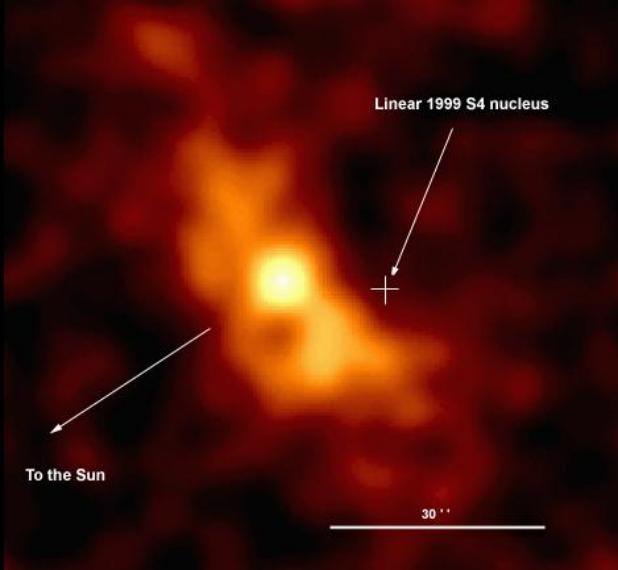
 Credit: NASA/SAO/CXC/STScI/Lisse et al.
Credit: NASA/SAO/CXC/STScI/Lisse et al.
A Snowball's X-rays Solved
One of the
biggest surprises to be uncovered by the ROSAT X-ray observatory was
the discovery that comets, mountain-sized snowballs travelling around the
sun, produced X-rays. X-rays are generally produced by very high energy
processes, and very few people expected such processes to be associated
with cold objects like comets. Thanks to a new
observation by the ACIS
X-ray camera on the Chandra X-ray
observatory, we now know the mechanism by which comets produced X-ray
emission. The ACIS observation of comet C/1999 S4 (LINEAR) shown above
shows the intense X-ray halo surrounding the sunward side of the snowball.
ACIS also has the capability to split the observed X-ray emission into its
component wavelengths; by using ACIS to look at the X-ray spectrum,
scientists have shown that the X-rays are produced as ions from the solar
wind capture electrons from the comet's halo; the X-rays are generated as
the captured electron cascades down to the atomic nucleus.
Last Week *
HEA Dictionary * Archive
* Search HEAPOW
* Education
Each week the HEASARC
brings you new, exciting and beautiful images from X-ray and Gamma ray
astronomy. Check back each week and be sure to check out the HEAPOW archive!
Page Author: Dr. Michael F.
Corcoran
Last modified August 18, 2000


